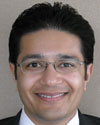With consumers in the U.S. and abroad facing depressed home values, diminished retirement accounts and an inability to access credit, it is now clear that the current financial crisis will be followed by declining consumer demand for goods and services, falling manufacturing output and increasing unemployment.
The question for the Obama administration is not whether to stimulate our economy, but rather which forms of stimulus will be the most effective. A focused, multifaceted commitment to revitalizing our nation’s infrastructure and rebuilding our engineering workforce offers an unbeatable combination.
The infrastructure deficit in the U.S. is a threat to public safety and to our future competitiveness. We are seeing everywhere the effects of our decision to reduce public spending on infrastructure from 3% of GDP during the post-World War Two decades to only 2% since 1970. We already are seeing signs that America’s infrastructure is being leapfrogged by other nations.
But any solution to our infrastructure deficit must also address the alarming scarcity of young engineering talent in both the public and private sectors. This shortage has even broader ramifications: Engineers are needed to tackle some of the most urgent issues of our day. However, many engineering firm executives bemoan the paucity of able leaders in their thirties and forties to fill their shoes. This problem is not limited to the private sector, with two-thirds of the federal engineering workforce being 45 or older.
The numbers tell a startling story. In 1986, engineering and engineering technology students earned close to 10% of U.S. bachelor’s degrees. Despite attractive starting salaries, often above $50,000 a year, the percentage today is approaching 5%. Had graduation rates held steady since 1986, the industry would be graduating 70,000 more engineers today at the bachelor’s level and benefiting from 750,000 more engineering graduates in the workforce.
It is not too late to renew our edge in infrastructure and engineering. Now is the time for:
- Increasing public spending on key infrastructure projects that focus on revitalizing airports, dams, water and wastewater systems, the power grid, hazardous-waste sites, navigable waterways, roads, schools and mass transit.

TRAHANAS
- Taking a more creative approach to inspiring youths to seek engineering careers. This begins with recognizing talent and interest in math and science in early grades and nurturing them in students through middle and high school.
- Increasing the number of qualified teachers. While 81% of high school physical-education teachers have relevant degrees or certificates, only 33% of high- school physics teachers can claim the same. We need to offer tangible incentives to increase the supply of qualified public-school teachers and add magnet schools for math and sciences where specialized resources are available for both teachers and students.
- Encouraging university engineering departments to find new ways to identify, recruit and retain qualified new students. This includes addressing the still substantial underrepresentation of women in the field. We must also address the wide gap between the number of college freshmen who express interest in engineering and the number who actually graduate with engineering degrees.

NASH - Establishing public-private partnerships to offer more scholarships to engineering students at the bachelor’s level, similar to the financial support that advanced-degree candidates receive.
- Establishing a new generation of engineers as public role models, similar to the 19th century when Thomas Edison and Isambard Brunel were household names in the U.S. and U.K. Today, such role models are rare.
A significant investment in infrastructure and engineers would bring about short-term fiscal stimulus while leaving in its wake a long-term competitive edge in the form of renewed national plant and a workforce poised to extend America’s innovation leadership.


Post a comment to this article
Report Abusive Comment